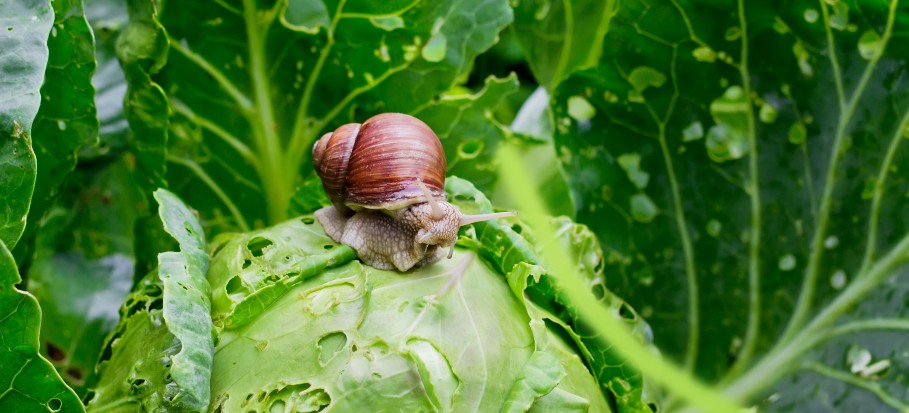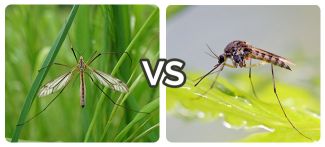
Gardening is one of the most interesting hobbies that a person can acquire. After all, how can it not be? You get to create your dream green space, grow your own vegetables and herbs, and help Mother Nature by providing beneficial insects, such as bees, a good home.
However, having a garden is not all fun and games – if you want to keep your green space in shape, you must invest a lot of time and energy into maintaining it, including proper pest control and prevention against garden grubs.
With that in mind, this article will discuss the UK’s 10 most common garden pests.
Here you’ll find information on:
- what the garden pests look like;
- why do garden insects attack your plants;
- how to deal with garden bugs eating your plants;
- Aphids
- Caterpillars
- Grasshoppers
- Slugs and snails
- Cutworms
- Earwigs
- Mexican Bean Beetles
- Potato Beetles
- Flea Beetles
- Ants
Aphids
Aphids are really, really tiny sap-consuming bugs that mainly attack plants that have been either overwatered or underwatered. They can be green in colour, black, white, and even red. Generally appearing in colonies, aphids are very easy to spot on a plant.
Aphids pest control tips:
In most cases, you can control aphids on your plants by wiping or spraying their leaves with a mild water solution and a few drops of dish soap. Reapply soapy water every 2-3 days for two weeks.
Caterpillars
Ah, caterpillars, while cute, these little buggers can destroy your entire vegetable garden in the blink of an eye. Basically, they eat through the plant’s leaves, leaving tiny holes behind, which, needless to say, isn’t very good for your green friends.
Caterpillars pest control tips:
It is effective to use organic solutions based on natural pyrethrins against caterpillars. As well as ready-to-use hand sprays, they are also available as concentrates that are diluted and sprayed directly onto plants. Taking preventative measures is the best way to control caterpillars in your garden. So you can invest in floating row covers to eliminate potential caterpillar infestations.
Grasshoppers
Grasshoppers. A.k.a – the garden plague. These tiny bright green or brown jumping bugs are every gardener’s nightmare. Why? Well, a grasshopper infestation isn’t a problem that you can resolve once and for all. You see, this type of garden pest is constantly on the move and searching for food, which means that your garden is always at risk. “Amazing”.
Grasshopper pest control tips:
You can repel grasshoppers and many other insects by spraying plants with strong-smelling substances. Home gardeners use garlic, vinegar, and hot pepper spray as homemade remedies. You can also use commercial grasshopper repellents. As we mentioned earlier, you can’t exactly end a grasshopper infestation. However, what you can do is take some prevention steps. For example, you can invest in a row cover to keep the jumpers away, keep your grass taller around your vegetable crops, or, if you already have an infestation, hand-pick them in the morning when they are less active and easier to manually remove.

Are pests causing troubles for you inside or outside of your property? Learn more about the wide range of reliable pest control solutions we offer!
Slugs and snails
While somewhat cute, snails and slugs are the types of garden pests that can be the death of your green space. Similarly to other vermin, snails and slugs leave tiny holes behind, damaging the plant. Seedlings are most commonly attacked by these types of pests, so you really do need to keep a close eye on your garden, otherwise, you can forget about fresh vegetables this summer.
Slugs and snails pest control tips:
A good preventative measure is to transplant your seedlings to keep them safe. If this isn’t a good option for you, you can also set slug fruit traps and eggshell barriers or hand-pick the already existing ones in the evening.
Cutworms
Basically, cutworms are moth larvae. We can say that they are nocturnal eaters because they like to hide during the daytime and munch on plants by night. Again, they are easy to spot as they are quite big bugs – cutworms can grow up to 4 centimetres in size and come in a range of pink and grey colours. As the name suggests, this type of garden pest can “cut” a plant by eating through its stem. Unlike other pests, cutworms don’t focus on one part of the plant – they can attack the leaves, stem, petals, etc. Mind you, cutworms can be mistaken for leatherjackets in the lawn. Be sure to know the difference.
Cutworms pest control tips:
A good cutworm control technique is to sprinkle ground-up coffee in your garden or to make circles from diatomaceous earth around your seedling. Both solutions will kill any cutworm that tries to attack your garden. Hand removal is the best way to get rid of a cutworm infestation.
Earwigs
Earwigs – not only do they look disgusting, but they can also cause very serious damage to your garden. These dark brown insects like to feed at night but are attracted to light, so if you flash your garden with a light, you’ll find them very easily.
Earwigs pest control tips:
Remove any debris from your garden regularly to keep earwigs out of your green space. This sort of pest likes to hide in dark and moist spots, and a pile of leaves is exactly that. You can also combine clearing your garden of the little critters with the diatomaceous earth method we mentioned earlier.
Mexican Bean Beetles
If you spot a bunch of ladybugs in your garden, look closely, as they might not be actually ladybugs but Mexican bean beetles. As you can already guess by the name of the pest, these types of small, red beetles like to feast on bean plants. The damage they cause can be quite serious, so if you find tiny bugs with 12 black dots on their back sitting on a plant, take immediate measures.
Pest control tips:
A natural pest control way to prevent Mexican bean beetles from infesting your garden is to plant specific types of flowers and herbs, such as rosemary and marigolds. Like the other common garden pests we have listed, you can also manually remove the beetles.
Potato Beetles
Potato beetles, also known as Colorado beetles, are striped, brownish insects that like to specifically munch on tomatoes, peppers and eggplants, and, of course – potatoes. Both adult beetles and their babies are fully capable of destroying an entire garden if they have the chance to do so, so proper pest control measures are crucial.
Potato beetle pest control tips:
The easiest way to get rid of potato beetles is to pour soapy water on top of the infested plants. Don’t worry – if you use a mild soap, you won’t damage your crops in any way. You can back up this method by spraying them with a DIY neem seed solution. Neem oil can be used to control garden pests, and the recipe for the spray can be found here.
Flea Beetles
Flea beetles happen to be another type of vegetable-loving pest. They like to snack on tomatoes, potatoes, eggplants, lettuce, corn, and cabbages, attacking the crops’ roots, germinating seeds, and also the plant’s leaves. The bugs are dark in colour, tiny, yet visible, and, as the name suggests, capable of jumping like fleas, thanks to their strong back legs.
Flea beetle pest control tips:
If you are looking for a way to get rid of flea beetles quickly and effectively, then using insecticidal dust is the best option. Spinosad and permethrin are two natural control agents that can help eliminate beetles. Due to the mobility of pests, consistent application is necessary. If you prefer not to use insecticides, spread some diatomaceous earth near your crops and install row covers to prevent flea beetles.
Ants
You might be wondering about ants at this point. While they pose no threat to your garden, it is in the garden where they form colonies. The colonies then send scouts to your home in search of food. If you happen to find ants in your kitchen and want to know where they came from, look no further than your garden. And since we’re on the subject, check our post on how to get rid of ants in your kitchen.
Need help around your garden?
Sometimes garden work can be A LOT, and no matter how much we want to mow the lawn or prune that fruit tree, we just don’t have the time to do it. This is where our gardening solutions come in.
Fantastic Services offers a range of garden and outdoor space maintenance services that can and will make your life a little bit easier. From hedge trimming and lawn mowing to tree pruning and garden clearance – the amazing gardening specialists we work with can do it all. So, why don’t you give your green space the love it deserves by calling Fantastic Services today?
Need a gardening professional?
Find a seasoned professional to take care of your greenery.

Takeaways
- It’s always better to go the eco-friendly route regarding pest control. Some types of chemical pesticides will do more harm to your garden than help.
- You must be 100% sure about the type of vermin you are dealing with, so you can take proper pest control actions.
- Most sorts of garden pests you can pick and remove by hand. While not very enjoyable and practical, this method happens to be very effective.
Looking for ways to keep pests out of your plants? We have the answer – build your own vertical garden!
***
Did you find our article helpful? Share your thoughts in the comments section below!
